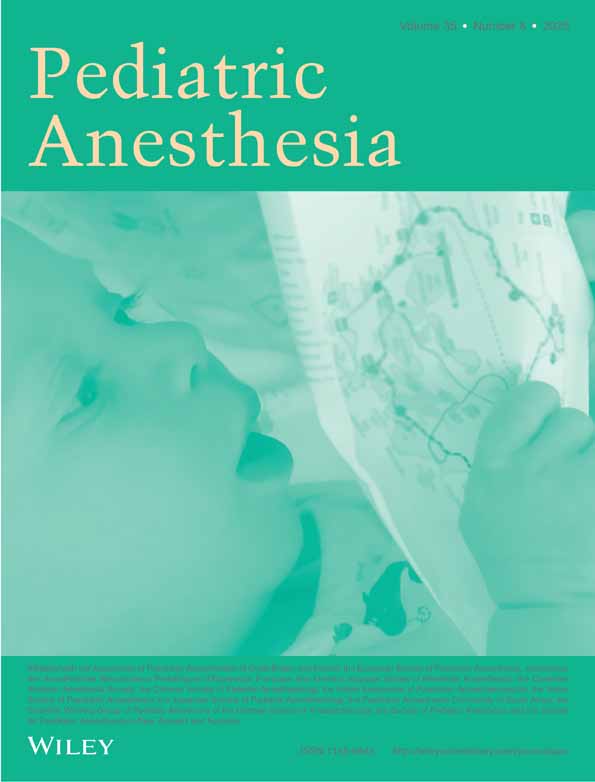Pharmacokinetics and analgesic effect of ropivacaine following ilioinguinal/iliohypogastric nerve block in children
Abstract
Background: The aim was to investigate the efficacy, tolerance and pharmacokinetics of ropivavcaine when administered for ilioinguinal/iliohypogastric block in children.
Methods: We examined the pharmacokinetics and analgesic efficacy after ilioinguinal/iliohypogastric nerve block with 3 mg·kg−1 ropivacaine 5 mg·ml−1 in 22 children, aged 1–12 years, who were scheduled for inguinal surgery. Sixteen of 22 patients had a postoperative pain score < 4 (Objective Pain Scale). Nine children were given supplementary analgesics during the first six postoperative hours.
Results: The peak plasma concentration of total ropivacaine was 1.50 ± 0.93 mg·l−1 (mean ± SD) (range 0.64–4.77 mg·l−1) 15–64 min after the injection. The peak plasma concentration of free ropivacaine was 0.05 ± 0.03 mg·l−1 (0.02–0.14 mg·l−1), which is well below the threshold for toxicity in adults. The terminal half-life was 2.0 ± 0.7 h. No safety concerns or symptoms suggestive of systemic toxicity were observed.
Conclusions: A dose of 3 mg·kg−1 of ropivacaine given as a single ilioinguinal/iliohypogastric nerve block in 1–12-year-old children provides satisfactory postoperative pain relief, and is well tolerated.




